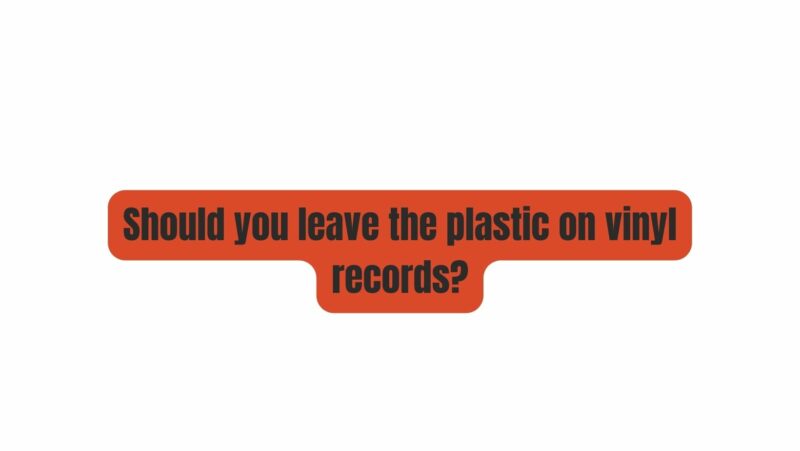In an era of digital music, vinyl records have made a remarkable comeback, drawing in both audiophiles and new music enthusiasts alike. Collecting vinyl records is not just about the music; it’s also about preserving these cherished artifacts. A common dilemma that collectors face is whether to keep the plastic wrap (shrink-wrap or polythene) on their vinyl records or remove it. In this article, we will delve into the considerations and arguments surrounding this question to help you make an informed decision.
The Purpose of Plastic Wrap
Protection and Preservation
The plastic wrap on vinyl records serves several crucial purposes:
- Protection from Dust and Handling: The wrap shields the record from dust and potential damage during handling, shipping, and storage.
- Sealing and Freshness: It seals the record, ensuring it remains in a pristine, factory-fresh condition until it reaches the consumer.
- Indication of Newness: For collectors and buyers, the presence of sealed plastic wrap often signifies that the record is new and unplayed.
Pros of Keeping the Plastic Wrap
Collector’s Value
- Collector’s Editions: Some vinyl records are released as limited or collector’s editions. In these cases, keeping the plastic wrap intact may increase the record’s value, especially if it is numbered or comes with additional items like posters or inserts.
- Condition Preservation: Plastic wrap helps protect the album cover from wear, aging, and potential damage over time. It can preserve the cover’s sharp corners and prevent ring wear.
- Authentication: In the world of vinyl collecting, the original plastic wrap can serve as a form of authentication, verifying the record’s condition and provenance.
Cons of Keeping the Plastic Wrap
Potential Drawbacks
- Moisture and Condensation: Plastic wrap can trap moisture inside, which may lead to mold or mildew growth if not stored in a dry environment.
- Warping Risk: In hot or humid conditions, the trapped heat can cause warping of the record, particularly if the wrap is too tight.
- No Visual Access: Keeping the wrap on prevents easy access to view the record and cover art without breaking the seal.
When to Consider Removing the Plastic Wrap
Practical Considerations
- Environmental Conditions: If you live in an area with high humidity or extreme temperature fluctuations, it may be advisable to remove the plastic wrap to mitigate the risk of moisture-related damage.
- Visual Inspection: If you’re unsure about the condition of the vinyl record or cover art, removing the wrap allows for a thorough visual inspection before purchase or collection.
- Regular Playback: If your intention is to play the record regularly, keeping the plastic wrap on can be impractical as you’ll need to remove it each time you want to listen.
How to Safely Remove Plastic Wrap
Best Practices
- Use a Sharp Tool: To avoid damage to the cover or spine, carefully use a sharp tool, like a razor blade or hobby knife, to slit the plastic wrap along the edge of the album cover.
- Avoid Tearing: Be cautious not to tear the album cover during the removal process. Go slowly and apply minimal pressure.
- Store Properly: After removing the plastic wrap, store the record and cover in a clean, dry, and cool environment to maintain their condition.
The Middle Ground: Resealable Outer Sleeves
For collectors seeking a compromise, resealable outer sleeves provide an excellent solution. These sleeves are designed to protect vinyl records while allowing for easy access and visual inspection. They offer the benefits of both protection and visibility.
Conclusion
The decision to remove or keep the plastic wrap on vinyl records ultimately depends on your specific circumstances and intentions as a collector. While keeping the wrap intact can enhance collector’s value and preserve the cover’s condition, it may not be suitable in all situations, particularly if you plan to play the record regularly or live in a climate with high humidity.
Careful consideration of environmental factors, the rarity and collector’s value of the record, and your own preferences for visual access should guide your choice. Whichever decision you make, it’s crucial to handle the process with care to avoid damaging the album cover, ensuring that your vinyl records continue to bring you joy and musical enjoyment for years to come.

